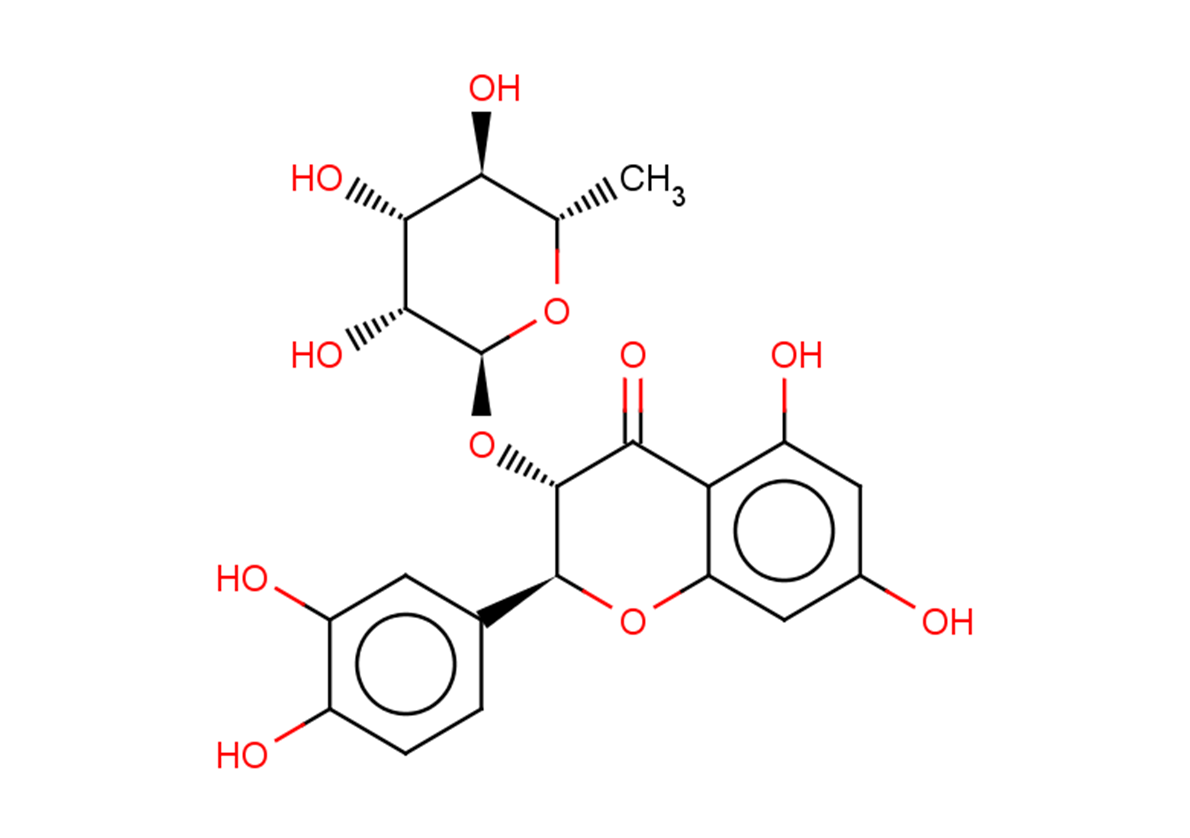
Neoastilbin
CAS No. 54081-47-9
Neoastilbin( —— )
Catalog No. M24527 CAS No. 54081-47-9
Neoastilbin may have antioxidant and anti-inflammatory activities, it shows potent inhibition of lens aldose reductase.
Purity : >98% (HPLC)
 COA
COA
 Datasheet
Datasheet
 HNMR
HNMR
 HPLC
HPLC
 MSDS
MSDS
 Handing Instructions
Handing Instructions
| Size | Price / USD | Stock | Quantity |
| 5MG | 426 | In Stock |


|
| 10MG | 611 | In Stock |


|
| 25MG | 888 | In Stock |


|
| 50MG | 1242 | In Stock |


|
| 100MG | 1701 | In Stock |


|
| 200MG | Get Quote | In Stock |


|
| 500MG | Get Quote | In Stock |


|
| 1G | Get Quote | In Stock |


|
Biological Information
-
Product NameNeoastilbin
-
NoteResearch use only, not for human use.
-
Brief DescriptionNeoastilbin may have antioxidant and anti-inflammatory activities, it shows potent inhibition of lens aldose reductase.
-
DescriptionNeoastilbin may have antioxidant and anti-inflammatory activities, it shows potent inhibition of lens aldose reductase.
-
In Vitro——
-
In Vivo——
-
Synonyms——
-
PathwayOthers
-
TargetOther Targets
-
Recptorothers
-
Research Area——
-
Indication——
Chemical Information
-
CAS Number54081-47-9
-
Formula Weight450.39
-
Molecular FormulaC21H22O11
-
Purity>98% (HPLC)
-
Solubility——
-
SMILESC[C@@H]([C@@H]([C@H]([C@H]1O)O)O)O[C@H]1O[C@@H]([C@H](c(cc1)cc(O)c1O)Oc1c2c(O)cc(O)c1)C2=O
-
Chemical Name——
Shipping & Storage Information
-
Storage(-20℃)
-
ShippingWith Ice Pack
-
Stability≥ 2 years
Reference
1.Antioxidant and Anti-Inflammatory Activities of Phenolic-Enriched Extracts of Smilax glabra.Evid Based Complement Alternat Med. 2014;2014:910438.
molnova catalog



related products
-
Calleryanin
The herbs of Gastrodia elata BL.
-
Phthalic acid
Phthalic acid is an aromatic dicarboxylic acid. It is a human xenobiotic metabolite.
-
QL9
QL9 is derived from the enzyme 2-oxoglutarate dehydrogenase and belongs to the endogenous peptide repertoire of all H-2d APCs.



 Cart
Cart
 sales@molnova.com
sales@molnova.com


